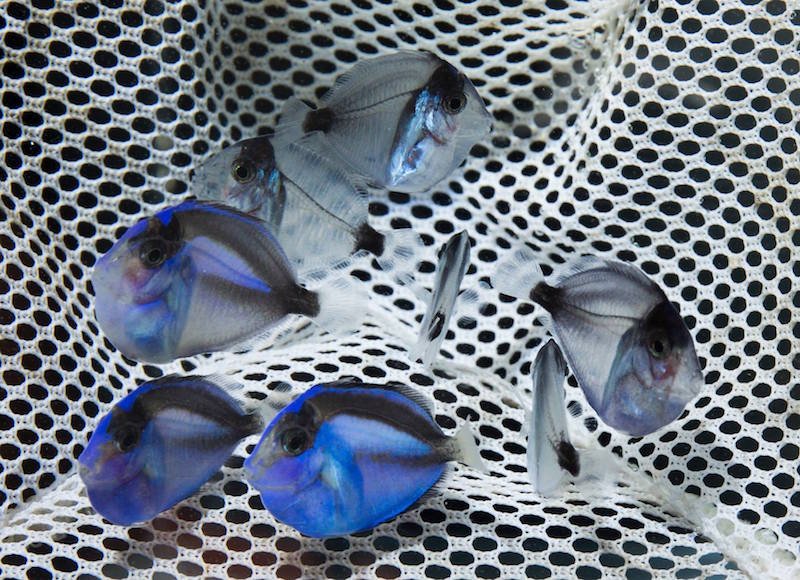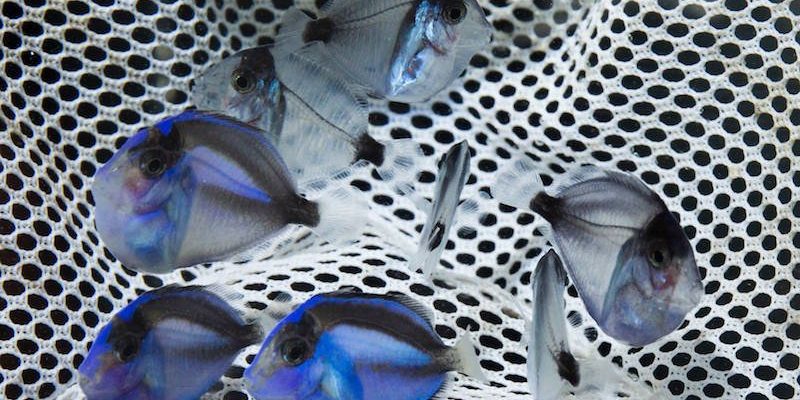
In this guide, we’ll dig deeper into the world of captive breeding for blue tangs. From understanding their natural habitat to the specific challenges you might face, we’ll take a closer look at what it really takes to successfully breed these remarkable creatures. So, pour yourself a cup of coffee, and let’s chat about how you can navigate the ups and downs of this rewarding hobby.
Understanding Blue Tang Behavior and Habitat
Before you jump into breeding blue tangs, it’s essential to know a bit about their behavior and natural habitat. Blue tangs, also known as *Paracanthurus hepatus*, are originally from the warm, shallow reefs of the Indo-Pacific. They thrive in areas with plenty of hiding spots, like rocks and coral. Think of their environment as a community where everyone has their territory but still interacts with each other.
You might be wondering how their behavior impacts breeding. Blue tangs are social fish, but they also have a natural pecking order. Males and females will establish dominance and territory, especially when it comes to breeding. Understanding these social dynamics is crucial. If you’re planning to breed them, you’ll need to create an environment that mimics their natural habitat, using plenty of rock structures and hiding places to make them feel secure.
Setting Up the Right Aquarium for Breeding
Creating a comfortable breeding environment is key to success. The size of the tank matters—ideally, you’ll want at least a 75-gallon aquarium for a pair of blue tangs. A larger tank allows them to swim freely and establish their territories without stress. Make sure to use a quality filtration system, as these fish require clean water to thrive.
When setting up your aquarium, consider the following tips:
- Water Quality: Keeping the water pristine is vital. Regular water changes and testing for salinity levels will help maintain a healthy environment.
- Temperature: Blue tangs prefer warmer waters, so keep the aquarium temperature between 75°F and 82°F.
- Lighting: Appropriate lighting is crucial, as blue tangs need a day-night cycle to feel comfortable. LED lights can simulate natural conditions well.
- Hiding Spots: Use live rock or decorations to create shelters where the fish can retreat when they need a break.
In doing all this, you’re not just setting up a tank; you’re giving your future breeding pair a cozy home, which is essential for a healthy breeding process.
Choosing the Right Breeding Pair
Now that your tank is ready, it’s time to select the breeding pair. Picking healthy, compatible fish is crucial for success. Look for vibrant colors and active behavior—these are signs of a healthy blue tang. You may also want to consider the age of the fish. Typically, a pair made up of one mature male and one female will yield the best results.
One challenge many beginners face is determining the gender of blue tangs. Males and females can look quite similar, but males often have a slightly larger body and may show brighter coloration during mating season. If you’re unsure, consulting with a local fish expert or a marine biologist can save you some frustration down the line.
The Breeding Process: Signs and Spawning
Once you have your breeding pair, you’ll need to recognize the signs that they’re ready to spawn. During the breeding season, which typically occurs in late summer or early fall, the male will display more aggressive behavior, chasing the female around the tank.
The spawning process usually follows a specific pattern. Here’s how it generally goes:
- The male will court the female, performing dances and flipping his fins.
- Once a female is receptive, they’ll both swim to the surface just before dawn and release eggs and sperm into the water simultaneously.
- After spawning, the eggs will drift away and attach themselves to surfaces in the tank.
After about 24 to 48 hours, the eggs will hatch into larvae. But here’s the thing: caring for blue tang larvae can be tricky. They require specific food and conditions to survive, so be prepared to invest time and effort into caring for the newborns.
Feeding and Caring for Blue Tang Larvae
Once your blue tang eggs hatch, it’s like stepping into a whole new world. The larvae are incredibly tiny and delicate and need special care. At this stage, they’ll require specific types of food. You can start by using a fine powdered food or specially formulated marine larval food.
Here are some important tips for feeding your larvae:
- Frequency: Feed them multiple times a day, as they have tiny stomachs and need regular nourishment.
- Food Variety: Introduce a variety of food options over time, including newly hatched brine shrimp and other microparticles.
- Water Quality: Keep a close eye on water conditions and perform regular water changes to ensure they remain healthy.
Watching these little guys grow from larvae to juvenile fish is incredibly rewarding. Just remember, patience is key.
Common Challenges and How to Overcome Them
Breeding blue tangs isn’t without its challenges. You might encounter situations where the pair doesn’t spawn or the larvae fail to thrive. Here are a few common issues and how to tackle them:
1. Fighting Amongst the Pair: If you notice aggressive behavior, it might indicate stress or a lack of space. Ensure your aquarium has plenty of hiding spots and room for the fish to swim.
2. Eggs Not Hatching: Low water quality or improper water temperature can affect hatching. Regular testing and adjustments will help maintain optimal conditions.
3. Larvae Die Off: If larvae are not thriving, check their diet and ensure they’re getting the right nutrients. Sometimes, a sudden shift in water conditions can cause problems, so monitor your levels closely.
Tips for Success in Breeding Blue Tang
To maximize your chances of successful breeding, here are some handy tips to keep in mind:
- Research: Read and learn as much as possible. There are many forums and communities dedicated to marine breeding that can provide valuable insights.
- Patience is Key: Don’t rush the process. It might take several attempts before you see successful breeding, and that’s okay.
- Stay Organized: Keep track of your fish’s health, breeding cycles, and any observed behavior changes.
Breeding blue tangs can be a fulfilling journey, filled with ups and downs. But with the right mindset and preparation, it can also lead to incredible rewards.
In conclusion, whether you’re captivated by their colors or looking to contribute to sustainable aquaculture, breeding blue tangs is a journey worth taking. By understanding their needs, setting up the right environment, and committing to their care, you can find success in this aquatic adventure. Just remember, every little step is part of the larger process, and you’ll learn something new along the way. Happy fish keeping!

